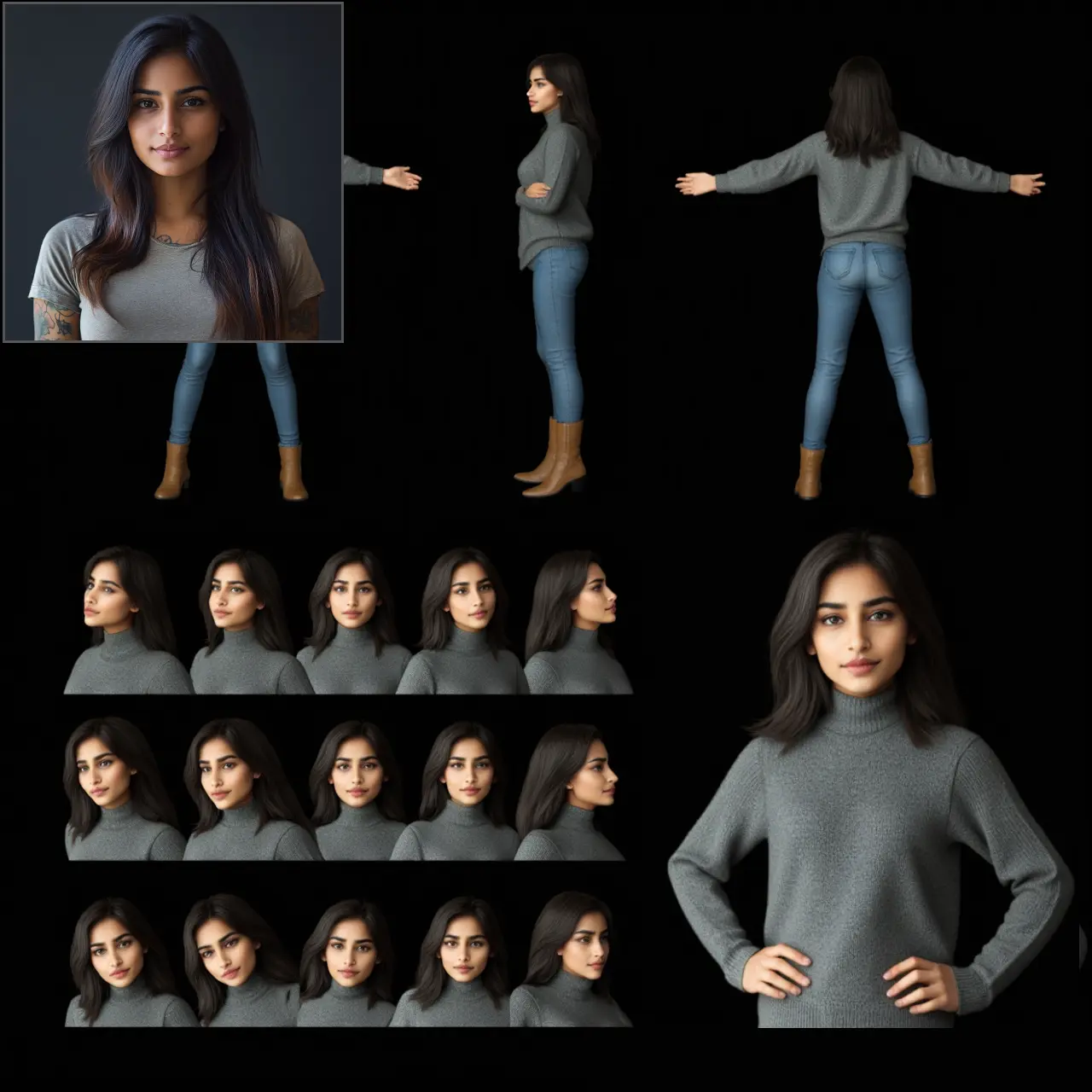ComfyUI Node: KSampler Fooocus
Fooocus_KSampler
CategoryArt Venture/Sampling
sipherxyz (Account age: 1392days) Extension
comfyui-art-venture Latest Updated
2024-11-04 Github Stars
0.24K
How to Install comfyui-art-venture
Install this extension via the ComfyUI Manager by searching for comfyui-art-venture- 1. Click the Manager button in the main menu
- 2. Select Custom Nodes Manager button
- 3. Enter comfyui-art-venture in the search bar
Visit ComfyUI Online for ready-to-use ComfyUI environment
- Free trial available
- 16GB VRAM to 80GB VRAM GPU machines
- 400+ preloaded models/nodes
- Freedom to upload custom models/nodes
- 200+ ready-to-run workflows
- 100% private workspace with up to 200GB storage
- Dedicated Support
KSampler Fooocus Description
Enhance AI art sampling with adjustable sharpness for improved visual quality and control.
KSampler Fooocus:
The Fooocus_KSampler node is designed to enhance the sampling process in AI art generation by incorporating a sharpness parameter. This node builds upon the standard KSampler, adding the ability to adjust the sharpness of the generated images, which can significantly impact the visual quality and detail of the output. By allowing you to fine-tune the sharpness, this node provides greater control over the artistic style and clarity of the generated images, making it a valuable tool for artists looking to achieve specific visual effects or improve the overall quality of their AI-generated artwork.
KSampler Fooocus Input Parameters:
model
This parameter specifies the model to be used for sampling. It is a required input and determines the underlying AI model that will generate the images.
seed
The seed parameter is an integer that initializes the random number generator, ensuring reproducibility of the results. The default value is 0, with a minimum of 0 and a maximum of 0xffffffffffffffff. Changing the seed will produce different variations of the generated images.
steps
This integer parameter defines the number of sampling steps to be performed. The default value is 20, with a minimum of 1 and a maximum of 10000. Increasing the number of steps can improve the quality of the generated images but will also increase the computation time.
cfg
The cfg (classifier-free guidance) parameter is a float that controls the strength of the guidance during sampling. The default value is 8.0, with a minimum of 0.0 and a maximum of 100.0, adjustable in steps of 0.1. Higher values can lead to more pronounced features in the generated images.
sampler_name
This parameter allows you to select the specific sampler to be used from a predefined list of samplers. The choice of sampler can affect the style and quality of the generated images.
scheduler
The scheduler parameter specifies the scheduling method to be used during sampling. Different schedulers can impact the convergence and quality of the generated images.
positive
This parameter provides positive conditioning to guide the sampling process. It is used to influence the generated images towards desired features or styles.
negative
The negative parameter provides negative conditioning, which helps to steer the sampling process away from undesired features or styles.
latent_image
This parameter represents the latent image to be used as the starting point for sampling. It is a required input and serves as the initial state from which the final image will be generated.
denoise
The denoise parameter is a float that controls the amount of noise reduction applied during sampling. The default value is 1.0, with a minimum of 0.0 and a maximum of 1.0, adjustable in steps of 0.01. Lower values can retain more noise, leading to more abstract results, while higher values produce cleaner images.
sharpness
This optional float parameter allows you to adjust the sharpness of the generated images. The default value is 2.0, with a minimum of 0.0 and a maximum of 100.0, adjustable in steps of 0.01. Increasing the sharpness can enhance the detail and clarity of the images.
KSampler Fooocus Output Parameters:
LATENT
The output parameter is a latent representation of the generated image. This latent output can be further processed or decoded to obtain the final image. It encapsulates the visual information generated by the sampling process, influenced by the input parameters.
KSampler Fooocus Usage Tips:
- Experiment with different seed values to explore a variety of image variations and find the most appealing results.
- Adjust the steps parameter to balance between image quality and computation time; more steps generally yield better quality.
- Use the cfg parameter to control the prominence of features in the generated images; higher values can make features more distinct.
- Select different samplers and schedulers to see how they affect the style and quality of the output.
- Utilize the sharpness parameter to fine-tune the detail and clarity of your images, especially if you are aiming for a specific artistic effect.
KSampler Fooocus Common Errors and Solutions:
"Invalid model input"
- Explanation: The model parameter is not specified or is incorrect.
- Solution: Ensure that you provide a valid model as input.
"Seed value out of range"
- Explanation: The seed parameter is outside the acceptable range.
- Solution: Use a seed value within the range of 0 to 0xffffffffffffffff.
"Steps value out of range"
- Explanation: The steps parameter is set below 1 or above 10000.
- Solution: Adjust the steps parameter to be within the valid range.
"CFG value out of range"
- Explanation: The cfg parameter is set outside the range of 0.0 to 100.0.
- Solution: Ensure the cfg value is within the specified range.
"Denoise value out of range"
- Explanation: The denoise parameter is set outside the range of 0.0 to 1.0.
- Solution: Adjust the denoise parameter to be within the valid range.
"Sharpness value out of range"
- Explanation: The sharpness parameter is set outside the range of 0.0 to 100.0.
- Solution: Ensure the sharpness value is within the specified range.
KSampler Fooocus Related Nodes
RunComfy is the premier ComfyUI platform, offering ComfyUI online environment and services, along with ComfyUI workflows featuring stunning visuals. RunComfy also provides AI Models, enabling artists to harness the latest AI tools to create incredible art.


